After remaining shrouded for centuries, an old city family stumbled upon the Prophet’s relics and rare manuscripts fundamental to Kashmir’s transition to Islam. Establishing the twin lineages in their family, the discovery details Kashmir’s connection with Turkistan, reports Bilal Handoo

For nearly 200 years, their attic was a no-go area. Their fore-fathers would advise every family member not to get even closer to the wooden box lying abandoned inside their old city’s rundown residence. In one aberration to the unwritten rule, a family member had died as well, which reinforced the belief forcing successive generations resist attic advances to avoid bad omen.
But by 2012, the crumbling house unearthed the boxed mystery. That summer, the family stumbled upon the relics, proving that Islam came to Kashmir much before what historians say. The biggest of all discoveries was the recovery of Prophet Muhammad’s (SAW) relics inside that box, they feared for centuries!
Out of that dusty box laying shut in the attic of Quazi family’s Daribal house, nine relics were retrieved. But before one could research on the relics, the question was: who was this family that had suddenly become the privileged lot near Naqeshband Sahab shrine?
Fast fact-finding revealed that it was the same family that used to receive personal mails from His Highness, Maharaja Pratap Singh. Little more inquiry revealed they were frequented by Ms Fitze Mallinson, the English lady who founded Srinagar’s Mallinson Girls School in 1912 at Fateh Kadal (later shifted to Lal Chowk). And further probing made it absolutely clear that it was family that was rooted in Turkistan.
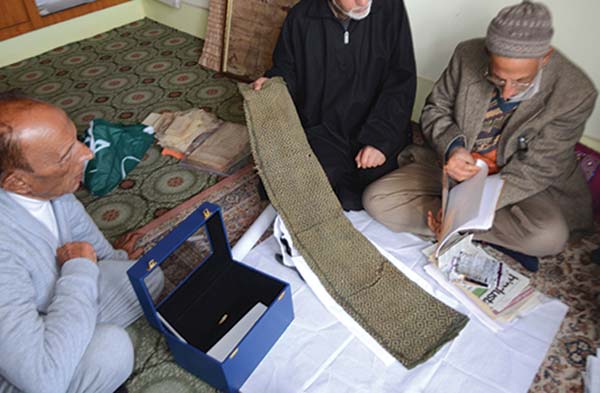
When a young Turkistan trader-poet began yearning for his spiritual master, the well-known Kashmiri saint Sheikh Hamza Makhdoomi (RA) (1494 – 1576 AD) was already drawing droves of devotees to his hillock abode. The rare manuscript identifies the Turkic trader as Miram Bazaz. “That young man was a different tribe,” reveals the moth-eaten text. “He was a pious man, known for his charitable works. His good works were known to everyone in Turkistan’s Iskandarpur.”
To address his longing, he undertook Mecca pilgrimage. While crying his heart out there, he is believed to have a vision of Prophet Muhammad (SAW), who “instructed” him to visit Kashmir to meet “His beloved Hazrat Sheikh Hamza Makhdoomi(RA)”.
With that, reveals the rare personal diary of Bazaz, began his treacherous journey to Kashmir. The trader finally reached Koh-i-Maraan, the saint’s dwelling.
“From the first meeting itself,” says the manuscript, “the Turkistan trader became the beloved disciple of the saint.”
Miram Bazaz shortly acquired Malkha graveyard in old city and dedicated it to the native Muslims “in accordance with his murshid’s (his spiritual master’s) wishes”. Later, he authored two treatises: Tazkiratul Murshidin and Se Gazal. The twin compilations describe the bond between the saint and the disciple.
Later Bazaz gave up poetry after having a ‘vision’. But passing away of his saint made him to wander into woods and wilderness. After leading a hard and struggling life, the trader from Turkistan was laid to rest in Malkhah.
The period that ensued pushed the Bazaz family into a different form of wilderness before time apparently stopped ticking for them on June 13, 2012.
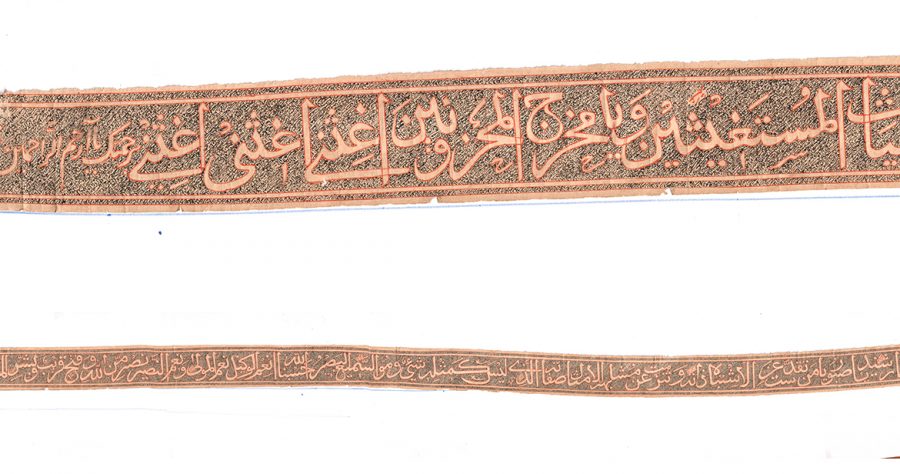
That day Bazaz’s grandchildren living overseas had decided to desert their crumbling ancestral house. Quazi Mohammad Ashraf, the senior most among surviving Quazis at 81, who had retired as high-ranking official, was hesitant to touch the box. The moment ‘shaky hands’ opened the lid, they were stunned to see the relics inside.
With sighting came suggestions. They were advised to construct shrine for housing the relics. Even one key clergyman suggested them to throw the relics in fire to test their authenticity. Others, “the opportunist lot”, frequented their home for securing the permanent custody of the relics. But Quazis stood unfazed, hushed.
The deadlock finally broke over the waazwan. While taking part in the feast, Quazis happened to share the relic discovery with the prominent Kashmiri medico, Dr Allaqaband. The doctor contacted the experts to carry out the fast fact-finding exercise. State’s archives and antiquities department investigated the amazing find for two months before pronouncing it authentic. Kashmir University did further investigations to prove its authenticity. Months later, the department of Archives Srinagar registered the relics in terms of the provisions of the Antiquities and Art Treasure Act 1972.
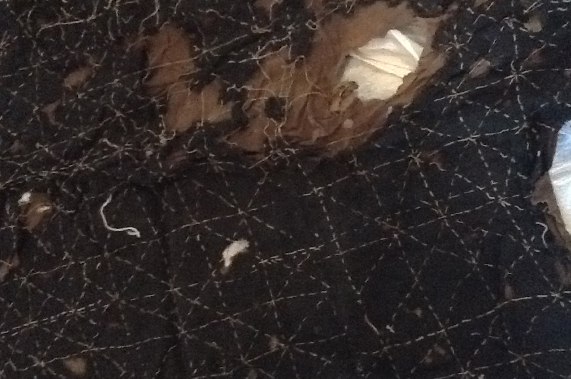
In the nine retrieved relics were the camel wool mat of Prophet Muhammad (SAW) and a robe of Hazrat Ali Murtaza (KTW). “These relics dating back to Prophet’s era are second in Kashmir after the holy relics of Hazratbal,” the fact-finding asserted.
Among the relics was the 25-feet scroll Quran with 99 names of Allah. Calligraphed with a rare technique, it is hardly readable with naked eye and can be read with the help of a magnifying lens. “It must be, most probably, the only one of its kind available anywhere in the world,” the research concluded.
The holy Quran was written on parchment made in China. Sheikh Hamza Makhdoom (RA) through the written document in Persian had given its authority to Miram Bazaz. He also received the cap, the comb and the one of the two belts of the saint. The other belt is said to be in possession of the Mirwaiz family.
What further authenticated the relics were two sanads (letters of authentication) accompanying the relics. They are duly attested by the renowned Ulemas of the period. The scrolling Quran carries 40 stamps of authentication. The sanad while proclaiming Bazaz to the highest order of sainthood counsels the descendents to preserve and protect the relics as a source of piety and elation. It bears the year 1121 Hijree, corresponding to 1700 AD.
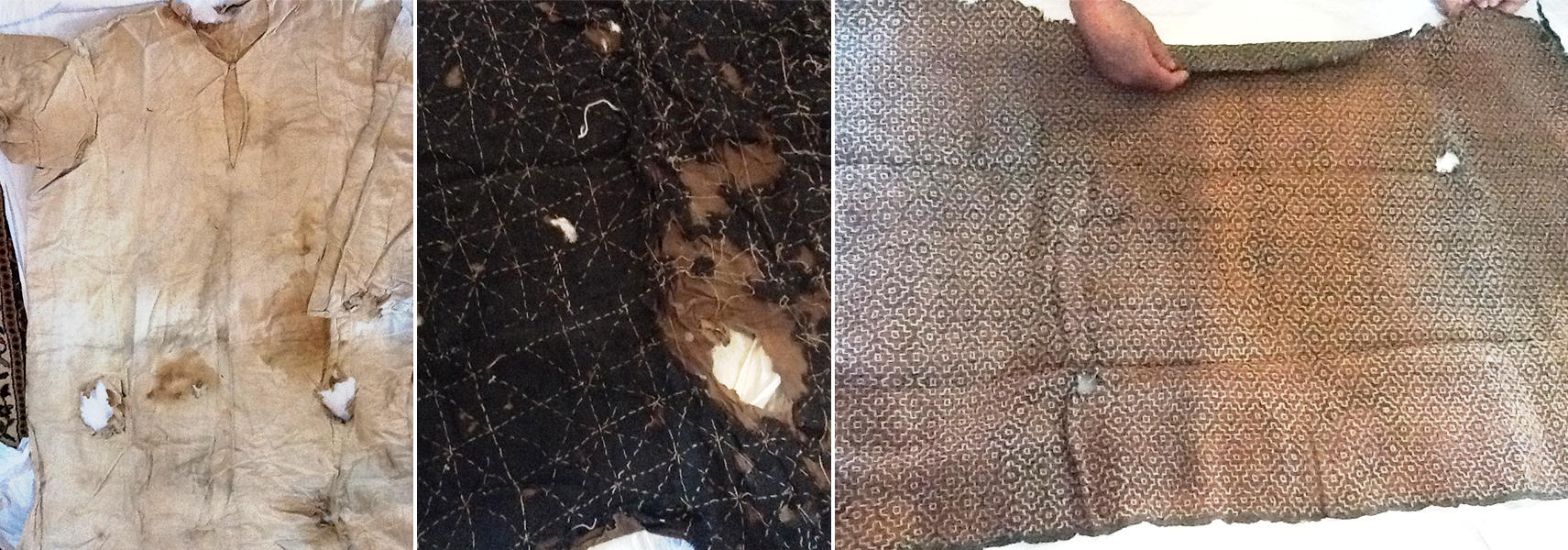
It was the current Quazi clan’s grandfather, Aziz ud Din Quazi who actually formed an inherited link between two lineages in the Quazi family. He was adopted by one Quazi family from Khanyar. As the only son in Ghulam Nabi Quazi’s home, he ended up receiving the relics—the Prophet’s mat and His son-in-law’s robe—as the ‘sacred inheritance’. Based on the Sharje Nasb (lineage), the possession of the relics pointed presumably to the ancestors culminating with Hazrat Abdullah bin Masood (RA), the prophet’s companion.
While it is not known how the Khanyar family acquired the relics, Aziz later returned to his real parent’s home with them. The relics added to the already relic kitty. He went on to adopt Quazi as surname instead of Bazaz. And to prevent their desecration, the family boxed them in an attic and spread a word that it carries something that cannot be touched.
But years before the Quazis could stumble upon the relics, the old city family was living an eventful life. They were known men of letters in the area, busy handling and solving the local judicial issues. Their education also helped them to get closer to power personalities of the times.
When a postcard was delivered to their old city address on February 8, 1927, it only revealed their close relation with Dogra rulers. The postcard had come from Maharaja Pratab Singh to Aziz’s wife—who was the first female teacher at famous Mission School of Fateh Kadal. The Maharaja had sent postcard to inquire about her ailing health.
“Even Ms Mallinson would frequently visit our home to discuss the educational matters,” says Quazi Ashraf. Later, the family went on to acquire Prem Nath Bazaz’s famed newspaper, Hamdard. They are still running it, though its vintage prominence is nowhere visible despite emergence of many scribes in Quazi family, like Ghulam Rasool Arif, Mohammad Afzal Makhdoomi and others.
These days the elder Quazis put up at 90-Ft in city outskirts, while most of their progeny live abroad.
Interestingly, days after the relics were retrieved, it was revealed that the scroll Quran was existing 400 years before the lifetime of Sheikh Hamza Makhdoomi (1494-1576 AD). Its early existence indicated that Islam had come to Kashmir much before than what the recorded history suggests.
With relic resurgence, Islam’s Kashmir origin debate got renewed. Some swiftly joined the dots back to the times of the last king of the Lohara dynasty, Suhadeva. The monarch had fled Kashmir after a Turkic–Mongol chief, Zulju, led a savage raid on Kashmir. After him, Rinchana (a Tibetan Buddhist refugee) took over Kashmir around 1320. His conversion to Islam is a subject of Kashmiri folklore. Later as Shah Mir’s coup on Rinchana’s successor secured Muslim rule in Kashmir, relics started coming home.
Most of the Prophet’s relics, the history notes, had come to sub-continent during 1300-1707 AD. Muslim rulers like Mughals had brought Tabarruk of the Prophet’s beard hair. The most famous of these relics is the one at Srinagar’s Hazratbal Shrine.
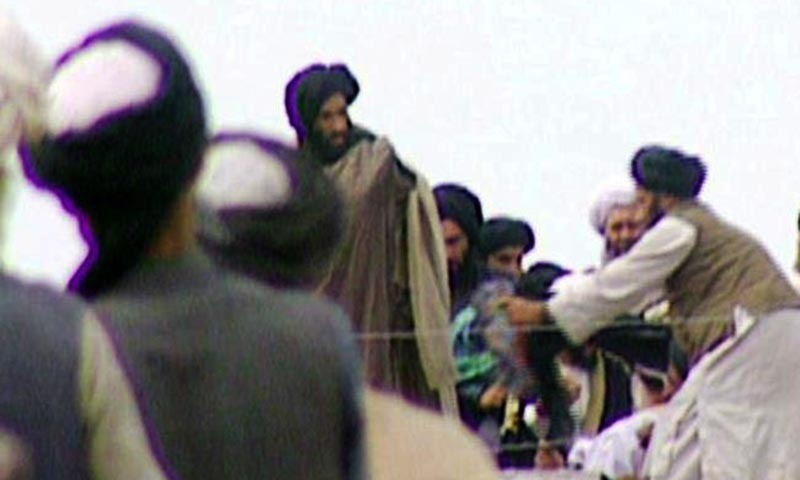
Years later, as Taliban leader Mullah Omar, appeared on a rooftop in Afghanistan wearing the prophet’s cloak, the present day Quazi’s began tracing their roots in Turkistan. They curtly learned that their ancestral hometown, Iskandarpur, now stands rechristened and redefined. But the revamp hardly derails their desire to revisit their roots, someday.
















This is Quite amazing to see its emergence after such a long time. As kids we grew up hearing stories about it from our mother and from great uncle and his son Quazi Riyaz, nephew of Mr Ashraf Quazi & Mr Majid Quazi.
However, it is very upsetting and sad at the same time that due deligence hadn’t been paid in terms of writing the factual history about how and who were part of this history. This needs to be rectified As soon as possible. It is interesting that in writing this fact people who are still alive who had the knowledge of it weren’t even approached about it to shed light on this extremely important historical fact.
There is no mention of our other great Uncle (Mamu) my grandmothers brother Mr Quazi Ghulam Mustafa the eldest brother of Mr Quazi Ashraf & Mr Quazi Majid sahib. Nor is there any mention of my grand father, Mr Mohmad Ahmad Jan. Sahib, who had a huge part to play in Kashmiri history through his newspapers.